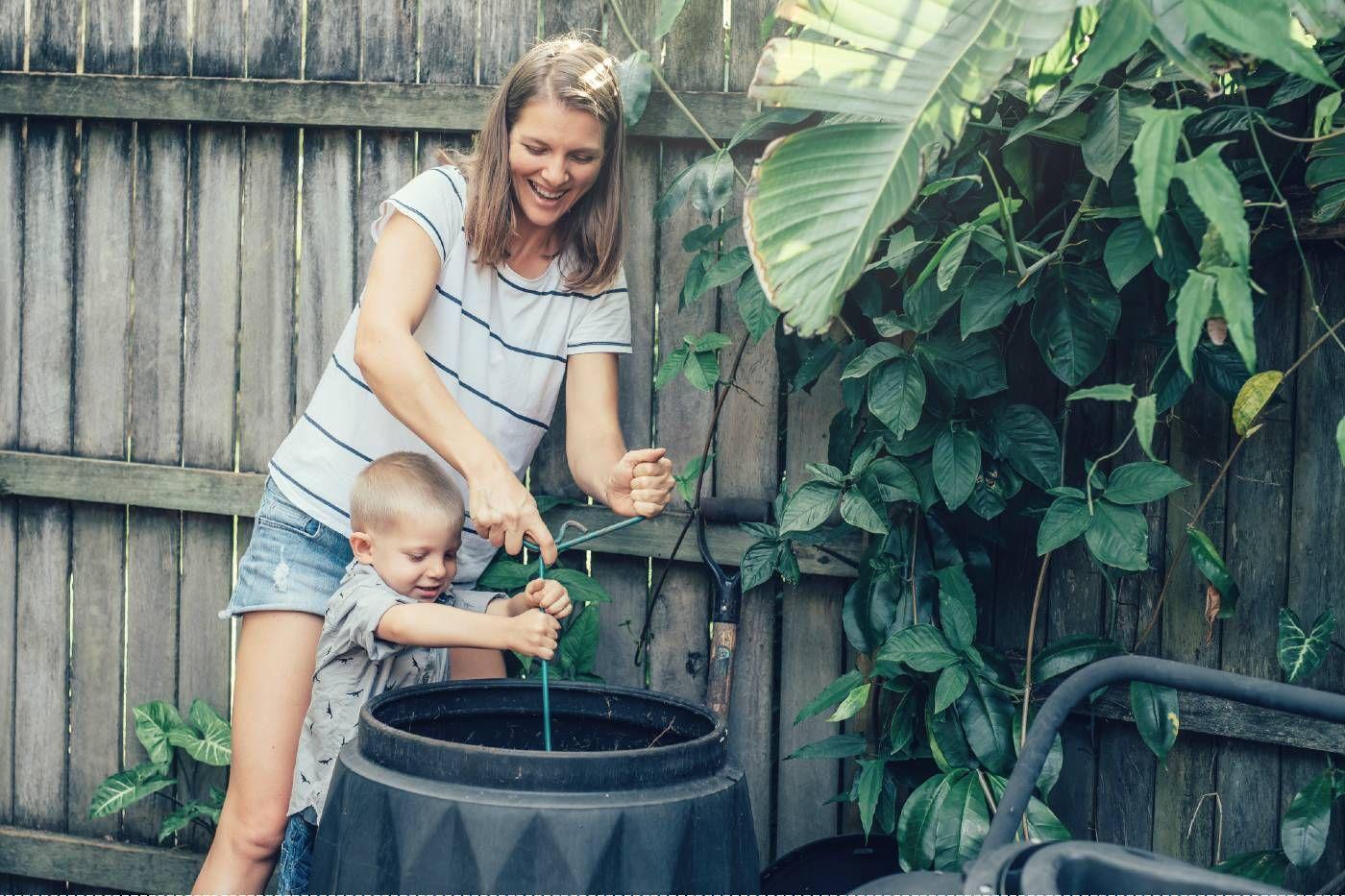PARENTS
Composting Tips for the Whole Family
Think composting is too yucky or complicated for your tot? Not so!

Written by
Happiest Baby Staff

SHARE THIS ARTICLE
PARENT PICKS
Bestsellers
PARENTS

Written by
Happiest Baby Staff

SHARE THIS ARTICLE
Bestsellers
As a grownup you might think composting is a chore, but children are way more likely to view composting as a super-fun science experiment that involves some of their favourite things: Dirt! Squirmy worms! Helping the Earth! In fact, a 2022 survey found that 55% of children are the ones who spearhead sustainability and environmentally-friendly practices in their homes. And a 2021 report found that even little kids are primed to be mini stewards of the environment. Researchers noted that preschoolers can not only get their heads around the negative impact of using chemicals on the Earth, they are excellent at understanding how composting works and how to do it. So, what are you waiting for? Here, some ideas to get your whole family composting right now!
Composting is recycling! But instead of tossing plastic bottles in your blue bin and wondering if it will be turned into, say, polyester or PVC decking, composting turns organic materials, like leaves and certain food scraps, into fertiliser. And you can do it at home. In short, composting creates an environment filled with bacteria, fungi, and other organisms (like worms and sowbugs) that work together to speed the decomposition process and creates a rich soil-like material called compost.
Compostable goods, like veggie scraps and garden waste make up more than a third of what we throw in the trash. That means composting greatly reduces the amount of trash we produce! According to the Environmental Protection Agency (EPA), composting at home also:
The best way to get little ones jazzed about composting is creating a windowsill compost bin where they can watch organic matter decompose right in front of their own eyes! Take an empty wide-mouth glass jar (and lid) from your recycling bin and the following supplies:
Have your tot toss a handful of dirt into the jar, followed by a few strips of newspaper, then kitchen scraps. Next, add a layer of dead leaves and grass clippings. Repeat the layers until the jar is mostly full then top with rainwater and close the jar. Poke several holes in the lid so oxygen can circulate and use your marker to draw a line (and mark the date) on the glass at the tip-top of your compost pile. Set your jar on a sunny windowsill and, about every two weeks, make a date and make a new line on the jar. (You and your bub will notice that the contents settle and move down.) By roughly week 12—voila!—your jar will be filled with nutrient-rich compote (and maybe even some worms) that is ready to move to your garden.
Children of all ages learn through storytelling. So, it is a no-brainer that picture books are perfect for sowing the seeds of composting. Here are some great options:
We love pumpkins—for about two months. After that, about 1.3 billion of them wind up in landfills! Instead of adding to the pile—and contributing to greenhouse gasses—try this activity from Honestly Modern next autumn:
The folks at the blog Raising Global Kidizens have a super-fun (free!) composting bingo game you can easily print out and play with your kids. (Hint: You can also print out two copies and make it into a composting memory game.) This is an engaging way for the whole family to learn what can—and cannot be-compostable. For example, did you know things like greasy pizza boxes, hair clippings, and egg cartons can all go directly into your compost bin? It is true!
Worm composting (aka vermicomposting) is a type of composting where you feed earthworms (specifically red wigglers) your kitchen scraps to create a super nutrient-dense compote. Here is how to do it, courtesy of KidsGardening:
Disclaimer: The information on our site is NOT medical advice for any specific person or condition. It is only meant as general information. If you have any medical questions and concerns about your child or yourself, please contact your health provider. Breastmilk is the best source of nutrition for babies. It is important that, in preparation for and during breastfeeding, mothers eat a healthy, balanced diet. Combined breast- and bottle-feeding in the first weeks of life may reduce the supply of a mother's breastmilk and reversing the decision not to breastfeed is difficult. If you do decide to use infant formula, you should follow instructions carefully.